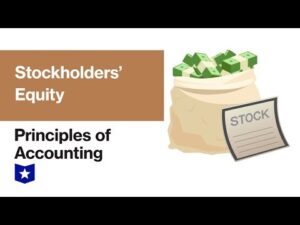Working Capital Formula How to Calculate Working Capital
Content
- The Working Capital Turnover Ratio And Its Relationship With Profitability
- What is the Working Capital Formula?
- Working Capital Turnover Ratio: Meaning, Formula, and Example
- What is the Working Capital Turnover Ratio?
- How Do We Calculate the Working Capital Turnover Ratio?
- What is a good working capital turnover ratio?

It’s working for the company ten times in a year, while Company B’s working capital is only working six times. It looks like Company A’s money is being made to work harder than Company B’s money is. The more sales you can bring in per dollar of working capital deployed, the better off you are. Let’s look at a couple working capital turnover ratio examples to bring some context as to why this metric is so useful for measuring efficiency.
What is the ideal net working capital to sales ratio?
An optimal net working capital ratio is 1.5 to 2.0, but that can depend on the business's industry. To adequately interpret a financial ratio, a business should have comparative data from previous time periods of operation or from its industry.
Indicates how effective a company is at using its working capital. In other words, it displays the relationship between the funds used to finance the company’s operations and the revenues the company generates as a result. It’s useless to look at your working capital turnover ratio in a vacuum. The metric is meant to help you compare how efficient your operations are to your competitors or others in your industry. It’s also meant to shed light on whether your operations are making progress every year.
The Working Capital Turnover Ratio And Its Relationship With Profitability
Y3K, Inc., has sales of $4,900, total assets of $2,945, and a debt-equity ratio of 1.10. The working capital turnover ratio is a valuable metric for evaluating a company’s financial health and its ability to generate profits. By analysing this ratio and taking steps to improve the efficiency of working capital, a company can increase its profitability, improve cash flow management, and achieve its growth objectives. The working capital turnover ratio compares company revenues to net working capital.
- How well are they utilizing current assets and liabilities to support growth in sales.
- A low ratio indicates your business may be investing in too many accounts receivable and inventory to support its sales.
- When a company has excess current assets, that amount can then be used to spend on its day-to-day operations.
- The working capital turnover ratio is a financial metric that measures a company’s efficiency in using its working capital to generate revenue.
The working capital turnover ratio is calculated by dividing the net sales by the average working capital. For example, if the net sales are $1,000,000 and the average working capital is $250,000, the working capital turnover ratio would be 4 ($1,000,000 / $250,000). This is where the working capital turnover ratio comes into play. https://kelleysbookkeeping.com/ A simple mathematical formula , it calculates how efficiently a company uses working capital to generate sales. Say Company A had net sales of $750,000 last year and working capital of $75,000. Company A’s working capital turnover ratio is 10, which means the company spent that $75,000 ten times to generate its $750,000 in sales.
What is the Working Capital Formula?
By using this ratio, companies can identify areas where they may be able to improve their operations and make better investment decisions. It is important to note that the working capital turnover ratio should be used in conjunction with other financial ratios and metrics to get a complete picture of a company’s financial health. By analysing the working capital turnover ratio, investors and analysts can gain a better understanding of a company’s liquidity Sales To Working Capital And Capital Turnover Ratio and operational efficiency. A high ratio indicates that a company is efficiently using its working capital to generate sales, while a low ratio may indicate that a company is struggling to convert its working capital into sales. A company with a high working capital turnover ratio will likely be doing well and require little extra finance. Regular inflows and outflows of funds allow the company to invest capital in expansion or inventory.
What is the ratio between working capital and turnover?
Working capital turnover ratio can be calculated by dividing the net sales done by a business during an accounting period by the working capital.
The working capital turnover ratio helps investors understand each company’s efficiency. A companies working capital is negative when the companies current liabilities exceed its current assets. Working capital as a percentage of sales tells a business how much of every sales dollar must go toward meeting operational expenses and short-term debt obligations. For example, working capital of 40 percent of sales means it takes 40 cents out of every sales dollar to fund the working capital cycle.


